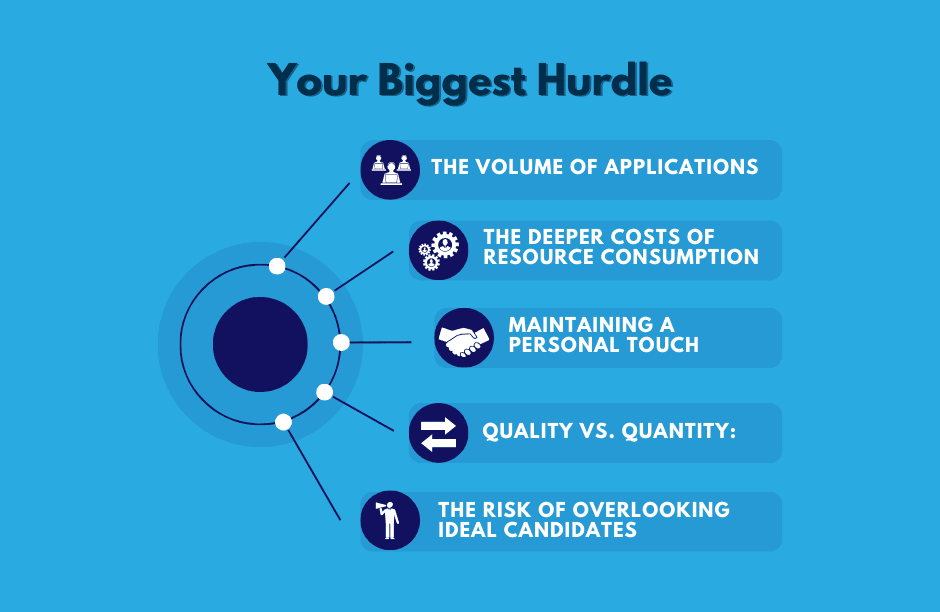The ease of applying for jobs through digital platforms and the use of automated application processes, while undoubtedly beneficial for job seekers, have also presented significant challenges for hiring managers. As more and more applications flood in, it becomes increasingly difficult for hiring managers to sift through the large volume of resumes and identify the most qualified candidates.

Additionally, the reliance on automated processes can sometimes lead to oversights or inaccuracies, potentially resulting in missed opportunities to connect with exceptional talent. Thus, it is crucial for hiring managers to strike a balance between leveraging technology for efficiency and ensuring a thorough and thoughtful evaluation of applicants.
By implementing strategies such as targeted screening criteria and personalized follow-up, hiring managers can navigate the complexities of the digital job application landscape while making informed decisions that positively impact their organizations.
Here’s how these developments become problematic and impact their work:
- High Volume of Applications: With the ease of applying for jobs, companies are now receiving a significantly higher number of applications for each job opening. This can be overwhelming for hiring managers to sift through and evaluate, leading to a longer and more tedious recruitment process.
- Lower Quality Applicants: While there may be an increase in quantity, this does not necessarily mean an increase in quality. With the low barrier to entry, more unqualified candidates may be applying for positions, making it harder for hiring managers to find suitable candidates.
- Time Constraints: Hiring managers are often under time constraints to fill open positions and make decisions quickly. The high volume of applications can make it difficult for them to thoroughly review every applicant and select the best candidate within the given time frame.
- Missed Opportunities: With so many applications to review, hiring managers may miss out on potentially great candidates who get lost in the sheer volume of applicants.
To mitigate these issues, you can adopt several strategies. Refine job descriptions to be more specific and clear about requirements, deterring unqualified candidates from applying. Utilize advanced features of ATS to better filter and manage applications. Implement pre-screening questionnaires to assess candidate suitability before reviewing their full application.
Invest in training yourself and your team in effective and efficient resume screening techniques. Consider incorporating AI and machine learning tools for initial screening to reduce the workload. Focus on building a talent pool through networking and proactive sourcing, reducing reliance on inbound applications. Lastly, ensure regular training and support for yourself and your team to handle the increased workload and maintain a fair, unbiased hiring process.
By implementing these strategies, you can navigate the challenges posed by the ever-increasing volume of job applications, ensuring a more efficient and effective hiring process while maintaining a fair and unbiased selection of top-quality candidates.
The Impact and Future of AI in Recruitment
Looking ahead, we can expect AI to continue evolving and becoming more sophisticated in its ability to analyze resumes and assess candidate suitability. However, the human touch will remain crucial in assessing cultural fit, emotional intelligence, and other soft skills that AI might overlook.
AI is not replacing human recruiters; instead, it’s augmenting their capabilities, making the recruitment process more efficient and effective. As we move forward, the key will be to find the optimal blend of technology and human intuition to ensure the best talent doesn’t slip through the cracks.
